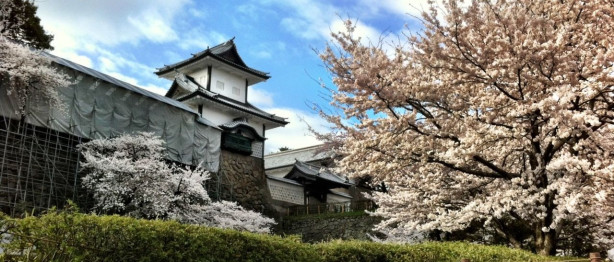Life in Ishikawa

Ishikawa Prefecture is located on Honshu Island in the Chubu Region of Japan. Ishikawa Prefecture has a population of 1,165,390 as of May, 2010.
Ishikawa is famous for its natural beauty, delicious food, and traditional cultural arts and practices. Kanazawa (population just over a million) is the largest city in Hokuriku after Niigata and has all the conveniences of a mid-sized city, plus really awesome food and art scenes and a fun bar district. Once you move away from Kanazawa in any direction, apartments and offices will give way to rice fields and bamboo forests. Depending on where you live, your lifestyle could be modern or rustic, and your cost of living high or low. Whether you’re in a city or in the country, the people around you will be curious about you and eager to help you get settled in and learn about your new home.
Because Ishikawa is on the opposite side of the country from most hubs of international business, other foreigners might be a rare sight. Kanazawa, Komatsu, and Hakusan City have attracted more foreign workers (especially from Brazil and the Indian Subcontinent) in the past few years, but are still nowhere near as diverse as Tokyo or Osaka. While English signage is par for the course on roads and in tourist areas, prepare for limited English in shops or stations. On the other hand, also be prepared for locals to seek you out as a conversation partner or just for tips on everyday English. Organizations like IFIE in Kanazawa and KIA in Komatsu can help connect you with services in your native language.
Local Culture
In some ways, it’s harder to find a place that feels more Japanese than Ishikawa. Kanazawa is often called “Little Kyoto” and the main street in the Higashi-chaya district is Japan’s most photographed. Tourists flock to Kenroku-en and Kanazawa-jo, but you can find traditional gardens and interesting historical sites throughout the prefecture. Every region has its specialty crafts, from Wajima Lacquerware in the Noto to Gold Leaf in Kanazawa to Kutani Porcelain and Kaga Yuzen silk in the south. Onsen resorts also abound, as do shrines and temples.
If you look at a map of Ishikawa, you will notice that it has a lot of coastline for its relative size. The fishing industry is very big here and the seafood is amazing. Local specialties include zuwai gani (snow crab), buri (yellowtail), and hotaru ika (firefly squid). The Noto and Kaga regions also have their own specialty heirloom vegetables. Kanazawa is a foodie heaven, with a restaurant-per-capita ratio higher than Washington DC. If you are concerned about radiation after the Fukushima disaster, be at ease–local produce is very easy to find all over the prefecture and points of origin for meat, fish, and veggies will all be clearly marked.
Ishikawa is at a midpoint between the Kanto and Kansai regions of Japan, so you will see traditions from both areas. Many of your Japanese coworkers will not speak Tokyo standard textbook Japanese any more than you speak slow, standard textbook English. One of the most noticeable differences is the substitution of や (ya) for だ (da) at the end of casual sentences. The ubiquitous そうですか (sou desu ka) and そうですね (sou desu ne) become そ~うなんや! (so~u nan ya!) or ほ〜なんや!(ho~u nan ya!). There’s a guide to heavier dialect here, if you want to impress your coworkers.